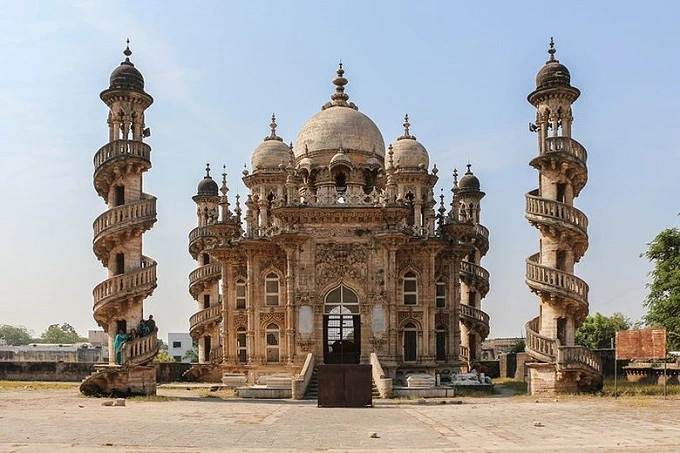In the middle of the ancient city of Junagadh, not far from the main highway, you’ll find one of India’s least well-known but most fascinating architectural oddities. The fascinating combination of Islamic and Gothic ornamentation can be seen in the Mahabat Maqbara. In addition, it is one of the mysterious country’s most closely guarded secrets. It is an impressive building known as a mausoleum. It was built on lands that for a significant amount of time were considered to be “no man’s land.” Every one of its components illustrates an entire one-of-a-kind combination of different styles. Very little information is available regarding the mausoleum, and its entire past is kept secret.
How did the history of the mausoleum of Mahabat Maqbara begin?
The mausoleum of Wazir Bahaduddinbhai Hasainbhai can be recognized by its imposing structure, which appears to have emerged from thin air. He was an eminent nobleman under Nawab Mahabat-khan II of Junagadh. In the year 1878, construction on this complex first got underway. This project was under the supervision of Mahabat Khanji. In 1892, his successor Bahadur Khan III brought the construction to a successful conclusion. The fruition of a decade’s labour can be seen in the intricate carvings adorn the building’s interior and exterior facades and the graceful arches, French-style windows, columns, and gleaming silver doorways. In the next-door mosque, each minaret is surrounded by spiral staircases from top to bottom. Both structures have distinctive roof lines in the shape of onion domes atop their structures.
The mausoleum in which the Junagadh Nawabs are interred is considered to be their final resting place. It is a marvel to behold how the extraordinarily luxurious design incorporates aspects of such a wide variety of cultures that appear incompatible. There are illuminating characteristics of European architecture and Indo-Islamic architecture, as well as the darkly flawless beauty of Gothic architecture. The Mahabat Maqbara Mausoleum in India is undoubtedly the most eye-catching example of the country’s diverse cultural influences.
Mixture of cultures
The incredible and intricate fusion of Indo-Islamic, European, and Gothic architecture found in this structure has a profound meaning and originates from deep roots. After all, the history of the region surrounding Junagadh is extremely complicated. In the year 1748, the city was established. After another half-century, it was incorporated into the British protectorate system. After another decade, the East India Company took control of the region and ruled it. The region did not break free of British control until the end of the period, during which the British ruled India as a colonial power. Saurashtra’s land was partitioned into more than a hundred independent principalities. Until the middle of the 20th century, the country existed in this configuration. The historic district of Junagadh served as a kind of neutral gubernatorial territory in today’s day and age. The Mahabat Makqara complex was built on this very spot in ancient Egypt.
No man’s land
The fact that the mausoleum was situated in what was essentially no man’s land only served to add to its allure. In 1947, India won its independence from British rule. At that time, Mahabat Khan III concluded that Junagadh should be incorporated into Pakistan in every way. Because they did not want this to happen, the locals violently revolted. The Nawabs were cornered and forced to seek refuge in Pakistan, which paved the way for Junagadh’s eventual incorporation into India.
Preservation of a unique historical monument
The Archaeological Survey of India has complete authority over the Mahabat Maqbara site present Archaeological Survey of India (ASI). This absolute one-of-a-kind architectural structure has been preserved thanks to the kindheartedness of the person who designed it. Nawab established a special fund, and each year the local community contributes Rs. 8,000 to it to cover the costs of maintaining the mausoleum. Despite the never-ending political upheaval in the area, the magnificent mausoleum palace of Mahabat Makqara remained unshaken as a guiding light. It has always exhibited an unshakeable composure in the face of the myriad influences surrounding it. Even in modern times, the monument continues to be justly regarded as one of India’s most interesting mysteries.
